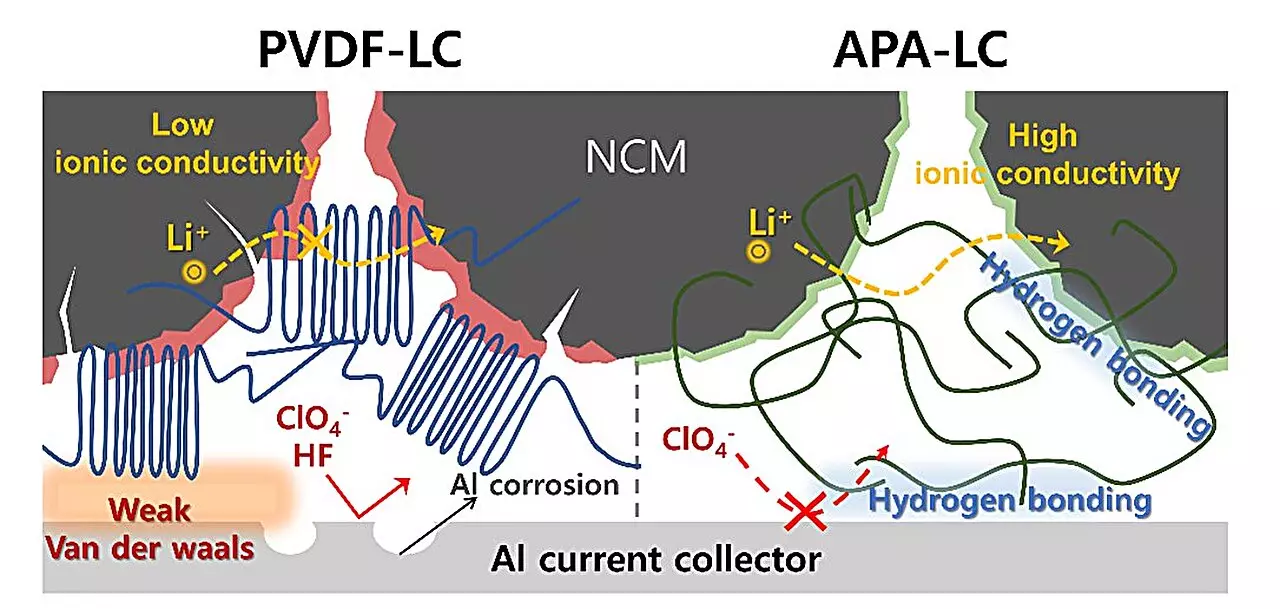As global environmental consciousness escalates, industries across the board are pressured to adopt sustainable practices. Battery technology, a cornerstone of modern electronics and electric vehicles, is no exception. Traditional lithium batteries, largely dependent on fluorinated compounds, are being scrutinized as concerns about their environmental impact become more pronounced. The use of polyvinylidene fluoride (PVDF) and lithium hexafluorophosphate (LiPF6) in these systems not only poses toxic risks but also jeopardizes battery performance due to the toxic byproduct, hydrogen fluoride (HF). With regulatory bodies, particularly in the European Union, moving towards stricter bans on per- and polyfluoroalkyl substances (PFAS), the urgency for eco-friendly alternatives in battery technology has never been more critical.
Recent advancements herald a promising shift in battery chemistry. A collaborative research effort by POSTECH and Hansol Chemical has culminated in the development of a groundbreaking battery system that discards the use of fluorinated elements altogether. Their newly designed lithium perchlorate (LiClO4) electrolyte, in tandem with a non-fluorinated aromatic polyamide (APA) binder, marks a transformative step away from the conventional PVDF-LP framework. This “APA-LC” system represents a sustainable alternative that aligns with both performance demands and regulatory compliance.
The APA binder plays a pivotal role in strengthening the relationship between the cathode’s active materials and the aluminum current collector. By preventing electrode corrosion, it not only enhances durability but also contributes significantly to the longevity of the battery. The research emphasizes that the APA-LC configuration can withstand the rigors of rapid charging and discharging—a critical feature in today’s fast-paced tech environment—while demonstrating a notable 20% improvement in capacity retention after 200 cycles.
The results achieved from testing the APA-LC system reveal a battery capable of addressing both performance and sustainability simultaneously. In a rigorous coin cell test, the new system showcased superior oxidation stability, maintaining a capacity that outperformed traditional systems by a wide margin. This is an impressive feat, especially when considering the stringent performance standards often associated with lithium batteries.
The ability to fabricate a 1.5 Ah pouch cell is yet another significant milestone. The pouch cell not only sustained its discharge capacity but also excelled during high-speed charge trials. Such advancements underline the viability of this technology for commercial applications, establishing a scalable model that is poised for widespread deployment.
The implications of this research extend beyond mere technical achievements; they signal a paradigm shift in how the battery industry approaches material selection and environmental challenges. Professor Soojin Park of POSTECH has underscored the significance of this breakthrough, emphasizing that it’s not just about replacing existing systems but rather proving that non-fluorinated alternatives can meet and exceed performance expectations.
Young-Ho Yoon, Managing Director of Hansol Chemical’s Secondary Battery Materials Division, articulated the potential market impact, projecting substantial growth in the global cathode binder market. By prioritizing eco-friendly solutions, companies position themselves not only to fulfill regulatory requirements but also to capitalize on emerging market opportunities.
The commitment to developing non-fluorinated battery technologies is indicative of a broader evolution within the battery industry. Continued research efforts will be instrumental in refining these technologies, optimizing efficiency, and exploring new applications. As environmental regulations tighten and consumers demand more sustainable products, the APA-LC system stands at the forefront of battery innovation.
The collaborative efforts of POSTECH and Hansol Chemical present a compelling case for the transition towards non-fluorinated battery solutions. This innovative approach not only addresses pressing environmental concerns but also offers significant performance advantages. As the world progresses, the successful implementation of these technologies will pave the way for a cleaner, more sustainable future in energy storage.


Leave a Reply
You must be logged in to post a comment.